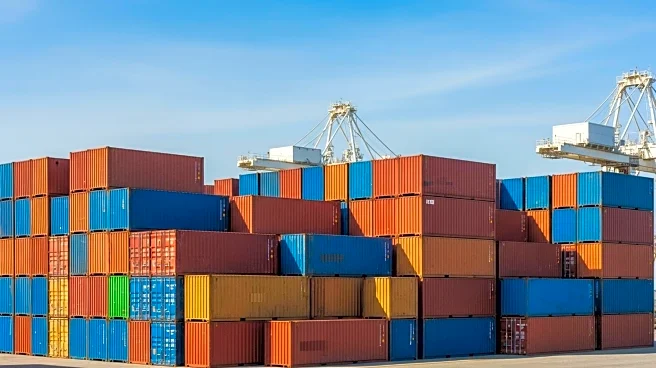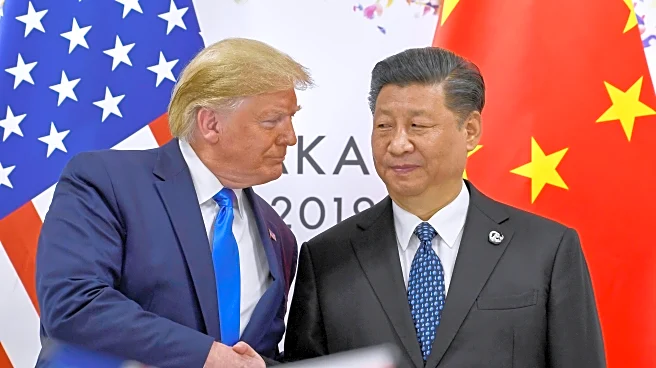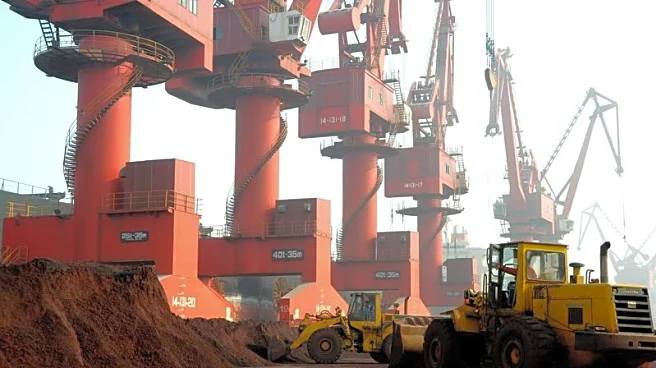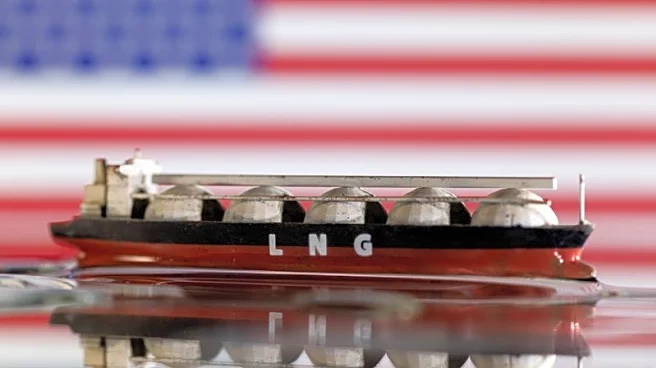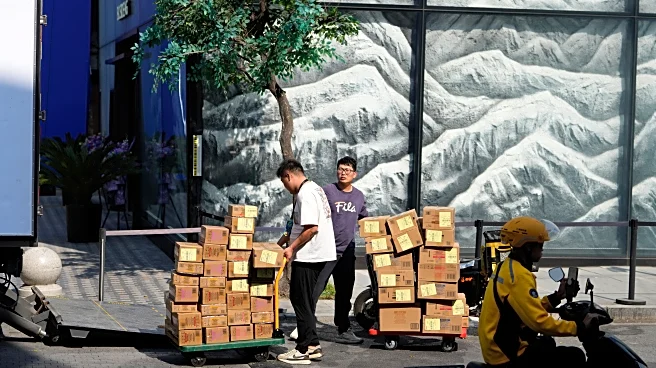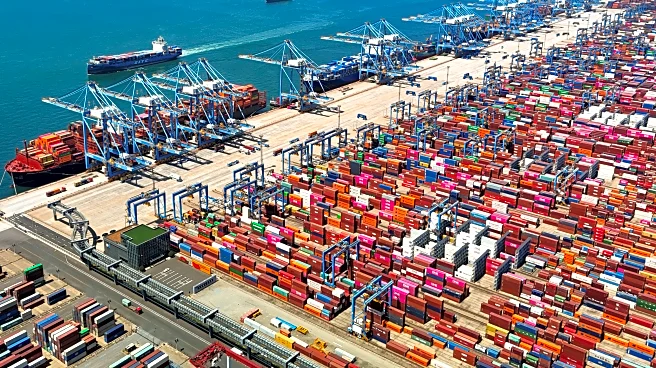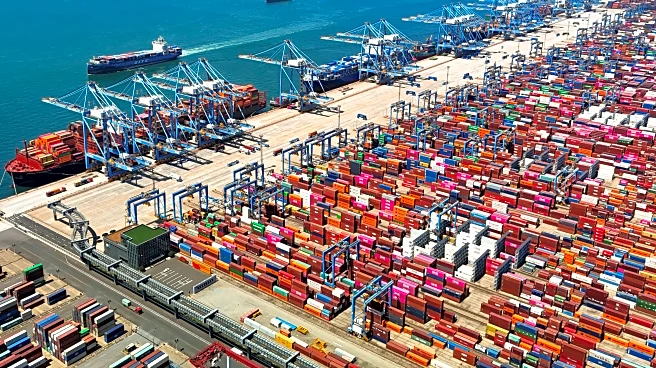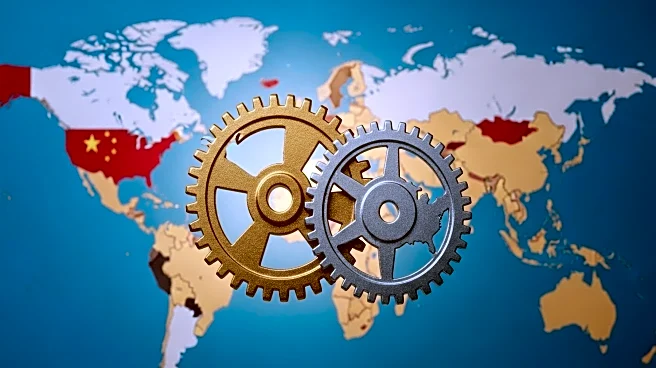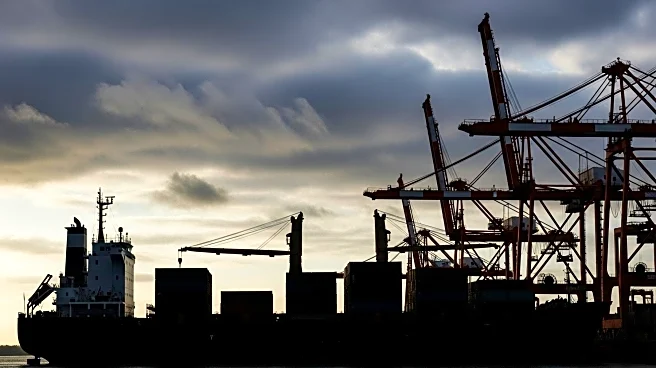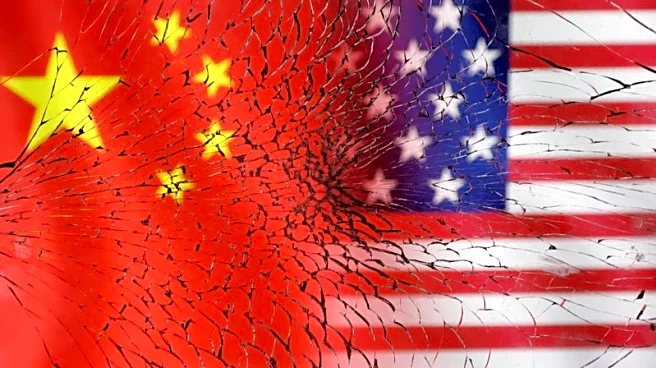What's Happening?
China's export growth in September 2025 exceeded expectations, rising 8.3% year-over-year, while imports saw their strongest growth since April 2024, increasing by 7.4% year-over-year. Despite these positive figures, the trade deal with the U.S. remains uncertain due to China's reluctance to resume purchases of American soybeans. President Trump has expressed intentions to pressure the Chinese president during their planned meeting later this month to end the moratorium on U.S. soybean purchases. Meanwhile, tensions between Beijing and Washington have escalated, with both sides threatening additional tariffs and restrictions, potentially leading to a trade embargo.
Why It's Important?
The ongoing trade tensions between China and the U.S. have significant implications for global economic stability. The reluctance of China to resume soybean purchases affects American farmers and the agricultural sector, which relies heavily on exports to China. Additionally, the potential for increased tariffs and restrictions could disrupt international trade, impacting businesses and consumers worldwide. The situation underscores the fragility of international trade relations and the need for diplomatic solutions to prevent further economic disruptions.
What's Next?
The upcoming meeting between President Trump and the Chinese president could be pivotal in resolving some of the trade issues. Both sides have expressed a willingness to engage in further talks, although the outcome remains uncertain. If the U.S. persists with its tariff threats, China has indicated it will take corresponding measures to protect its interests. The global community will be closely watching the developments, as any resolution could have far-reaching effects on international trade dynamics.
Beyond the Headlines
The trade tensions highlight the broader geopolitical struggle between the U.S. and China, with implications for global power dynamics. The situation also raises ethical questions about the use of economic leverage in international relations and the impact on smaller economies caught in the crossfire. Long-term shifts in trade alliances and supply chains could emerge as countries seek to mitigate risks associated with reliance on major powers.
